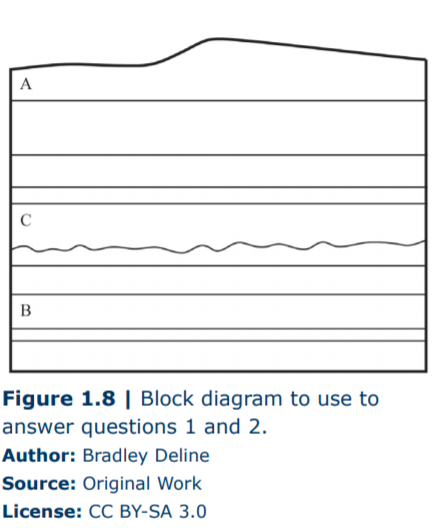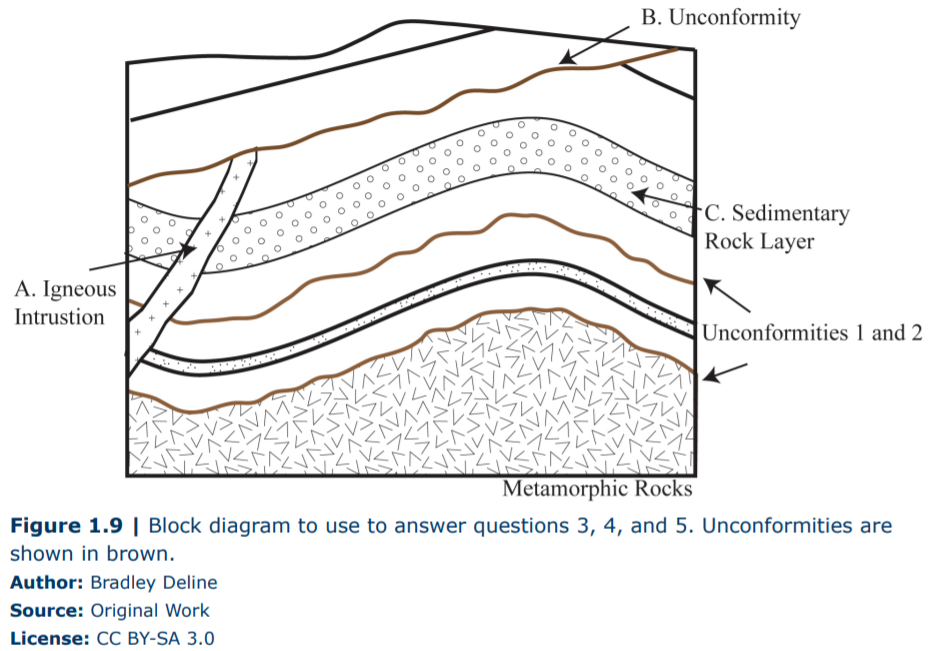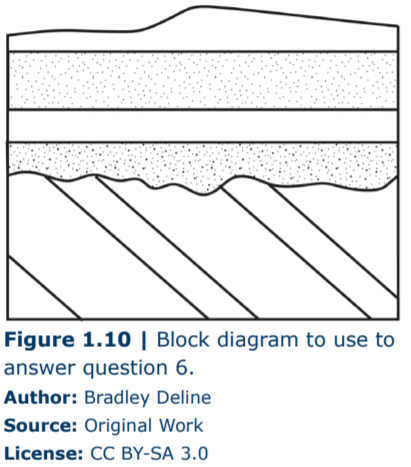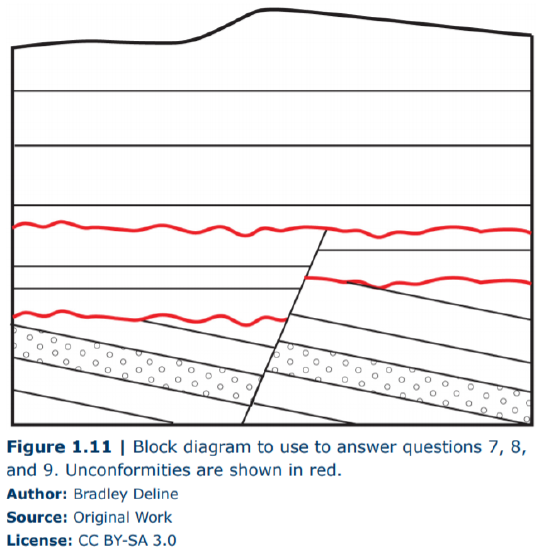1.3: Lab Exercise (Part A)
- Page ID
- 5436
Part A – Relative Time
Relative time is an important tool for geologists to quickly construct a series of events, especially in the field. In the following section, apply what you have learned regarding relative time to the questions below.
1. In Figure 1.8, which of the following rock layers is the oldest?
a. A b. B c. C

2. Which Geologic Law did you use to come to the conclusion you made in the previous question?
a. The Law of Superposition b. The Law of Cross-Cutting c. The Law of Original Horizontality d. Unconformities

3. In Figure 1.9, which of the following geologic structures is the youngest?
a. A b. B c. C
4. Which Geologic Law did you use to come to the conclusion you made in the previous question?
a. The Law of Superposition b. The Law of Cross-Cutting c. The Law of Original Horizontality d. Unconformities
5. Examine unconformities 1 and 2 indicated in Figure 1.9. Which of the following statements about them is true?
a. The older unconformity is a Nonconformity, while the younger is an Angular Unconformity.
b. The older unconformity is a Disconformity, while the younger is a Nonconformity.
c. The older unconformity is a Nonconformity, while the younger is a Disconformity.
d. The older unconformity is an Angular Unconformity, while the younger is a Disconformity
6. Examine the Unconformity shown in Figure 1.10. What type of unconformity is this?
a. Angular Unconformity b. Nonconformity c. Disconformity

Examine Figure 1.11. Note that all of the layers in this block diagram are composed of sedimentary rock and the unconformities are colored in red. Using the geologic laws discussed earlier and following the examples shown in Figures 1.6 and 1.7, identify the geologic events that occurred in this area. Then place the following geologic events in the correct relative time sequence.

a. Tilting.
b. Uplift and Erosion (Angular Unconformity).
c. Submergence and deposition of sedimentary layers 10-13.
d. Uplift and Erosion to the current position.
e. Submergence and Deposition of sedimentary layers 7-9.
f. Uplift and Erosion (Disconformity)
g. Submergence and deposition of sedimentary layers 1-6.
h. Fault.

7. Which of the above geologic events is the second in the sequence?
a. A b. B c. C d. D e. E f. F g. G h. H
8. Which of the above geologic events is the fifth in the sequence?
a. A b. B c. C d. D e. E f. F g. G h. H
9. Which of the above geologic events is the seventh in the sequence?
a. A b. B c. C d. D e. E f. F g. G h. H


